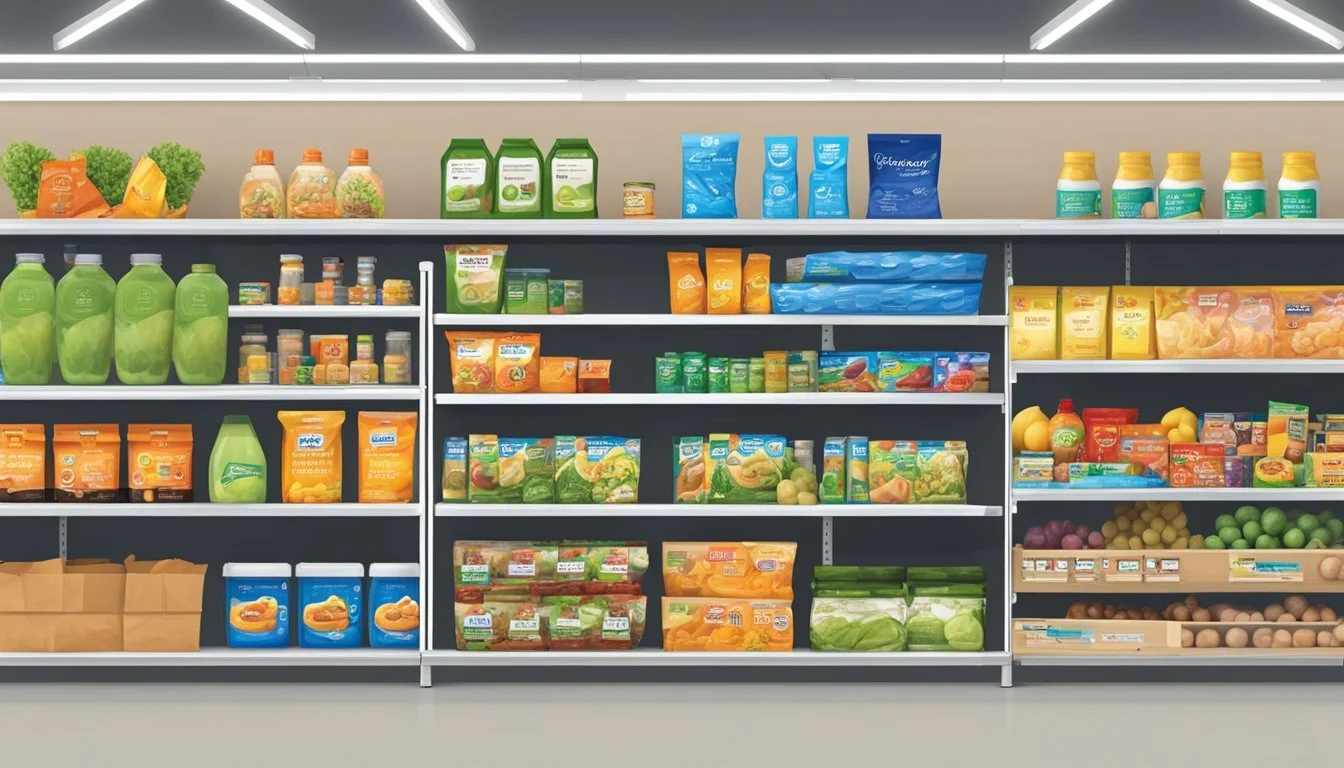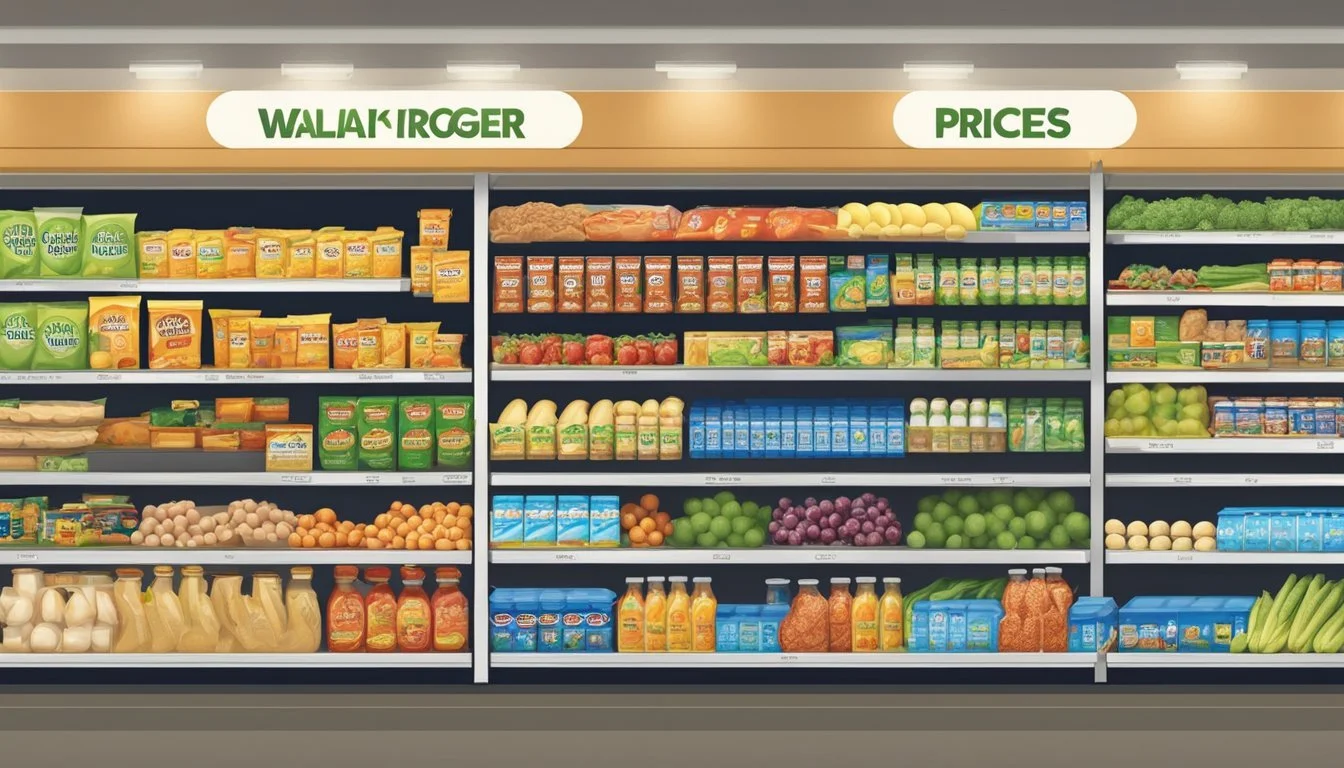Is Walmart Cheaper Than Kroger?
Comparing Prices Across the Supermarkets
Part of Our Grocery Store Guide with Details on Walmart Prices and Kroger Prices
In the landscape of American retail, the debate on affordability often centers on two heavyweight contenders: Walmart and Kroger. Walmart, with its "everyday low prices," positions itself as the go-to destination for economical shopping. On the other hand, Kroger, the largest supermarket chain by revenue in the United States, offers its customers competitive pricing, with steep discounts on frequently purchased items. Consumers looking to stretch their grocery budget often find themselves considering these two brands as they plan their shopping trips.
Recent studies and price comparisons shed light on the pricing battle between Walmart and Kroger. Independently conducted analyses suggest that Walmart's pricing for groceries is often more affordable than Kroger's. With general grocery prices being approximately 4% to 8% lower at Walmart, budget-conscious shoppers are leaning towards the retail giant for savings on their overall grocery bill.
However, the price comparison is not one-dimensional. Kroger emerges as a strong competitor in certain categories, such as proteins, dairy, and overall produce, offering lower prices than Walmart. This dynamic competition indicates that the answer to the question of whether Walmart is cheaper than Kroger is nuanced and can depend on the specific needs and shopping habits of the consumer.
Overview of Walmart and Kroger
Walmart and Kroger are two of the largest retail chains in the United States, with distinct business models and expansive store locations that cater to a wide consumer base. Each has developed strategic approaches to serve their markets and compete within the grocery sector.
Company Profiles
Walmart Inc. is a multinational retail corporation operating a chain of supermarkets, department stores, and grocery stores. Founded in 1962 by Sam Walton in Rogers, Arkansas, Walmart has grown into one of the world's largest retailers, known for its commitment to "everyday low prices."
Kroger Co., established in 1883 by Bernard Kroger in Cincinnati, Ohio, is one of America's largest supermarket chains. It operates various formats, including hypermarkets, superstores, department stores, and 2,750 grocery retail stores, providing consumers with a full grocery line.
Store Presence and Locations
Walmart has a significant global presence with over 11,000 stores worldwide, and a strong domestic footprint with stores in all 50 states. Their stores typically cover large areas, often placed in suburban and urban areas with high traffic to maximize accessibility.
Kroger maintains a robust store network predominantly in the United States, specifically concentrated in the Midwest and Southern regions. They have a strategic store placement that ensures coverage in both metropolitan and suburban areas, facilitating easy access to their services for a large segment of the population.
Business Models and Strategies
Walmart adopts a cost leadership strategy that emphasizes efficiency and bulk purchasing to offer products at lower prices. Their model revolves around high-volume sales with thin margins, utilizing extensive distribution systems and an impressive variety of merchandise.
Kroger relies on a customer-centric approach, focusing on customer loyalty and tailored shopping experiences. They employ data analytics to understand shopping behaviors and offer personalized deals. Kroger's strategy also includes a mix of house brands and premium products to cater to a broad customer base.
Product Range and Quality Comparison
Walmart and Kroger both offer a broad range of grocery items with a focus on quality. They stock various national brands and their own private labels, catering to different consumer needs.
Produce Selection
Walmart provides an extensive selection of fresh produce, including vegetables, fruit like bananas, and pre-packaged salads. Kroger also boasts a diverse assortment of produce, often emphasizing the freshness and quality of their vegetables and fruit offerings.
Meat and Dairy Quality
The meat and dairy selection at Kroger is notable, with a range of options from value-priced packs to high-quality cuts. They also offer their own brand of dairy products, Private Selection. In comparison, Walmart's Great Value brand includes various meat and dairy products designed to meet a balance between quality and affordability.
Bread and Baked Goods
When it comes to bread and baked goods, both retailers provide a mix of national brands and store-made options. Walmart tends to have a larger variety, including value products and premium choices. Kroger differentiates itself with a selection that includes artisanal and locally-sourced baked goods.
Pantry Staples
Pantry staples such as peanut butter, canned goods, and dry goods are readily available at both Kroger and Walmart. Consumers can find everything from generic to premium national brands, as well as store brands like Kroger’s Simple Truth and Walmart’s Great Value.
Organic and Natural Options
Both stores have responded to the increasing demand for organic and natural foods. Walmart offers a variety of such products under the Great Value label, while Kroger’s Simple Truth line is specifically designed to cater to this market segment with a wide selection of organic goods.
Private Label Brands
The competition extends to private label brands with Kroger's Simple Truth and Private Selection representing premium and organic choices, while Walmart’s Great Value range provides an affordable alternative. Both lines cover everything from snacks and beverages to frozen foods and prepared meals.
Price Point Analysis and Comparison
When shopping for groceries, many consumers are interested in where they can get the best value for their money. In the context of Walmart and Kroger, a detailed look at their pricing strategies reveals key differences in overall costs and category-specific pricing.
Overall Pricing
Walmart tends to have the edge in overall grocery prices, claiming the title for lower price points more often than not. A broad range of products is typically about 7-8% cheaper at Walmart compared to Kroger, which can result in significant savings over time.
Price Comparison by Category
A more granular price comparison by category between Walmart and Kroger illustrates where consumers might find the best deals:
Groceries: Independent studies show Walmart as the cheaper option, with savings of around 7-8% across the board.
Personal Care: Walmart also leads in providing lower prices in the personal care segment.
Household Items: In the case of household items like cleaners, Walmart's pricing is generally more competitive.
For those who prioritize fresh produce, dairy, and proteins, Kroger can be more cost-effective, with some reports indicating it is 3.3% cheaper in the fresh category.
In sum, despite some close margins in specific categories, Walmart is generally the more affordable option, particularly in non-perishable and frozen items. While Kroger does offer lower prices on certain fresh items, Walmart's pricing strategy makes it a go-to for a wider range of grocery and household products.
Customer Experience and Services
Both Walmart and Kroger have distinct features that cater to the customer's experience and services, affecting convenience, service satisfaction, organization, and offered deals.
Convenience and Shopping Options
Walmart and Kroger both provide multiple shopping options including in-store, online, and mobile app purchases. Walmart offers free 3-5 day shipping on orders over $35, while Kroger has a delivery service with fees ranging from $9.95 to $11.95. Both retailers provide curbside pickup, enhancing convenience for their customers.
Customer Service and Satisfaction
In terms of customer service, Walmart and Kroger are recognized for their efforts to provide a worthwhile shopping experience. While specific customer satisfaction ratings may vary, both companies have resources in place to address customer inquiries and issues, including in-store assistance, helplines, and online customer service platforms.
Store Organization and Cleanliness
Cleanliness and organization play a vital role in the shopping experience. Both retailers strive to maintain well-organized store layouts and clean shopping environments. Product selection is generally good in both stores, with Walmart occasionally edging out with a broader product range due to its larger size.
Loyalty Programs and Deals
Kroger is known for steep discounts on select items and a loyalty program that offers personalized deals and fuel points saving. On the other hand, Walmart's 'Everyday Low Price' strategy ensures competitive pricing across a wide range of products without the requirement of a loyalty program. Each store provides value to their customers through a mix of deals and programs designed to enhance savings.
Analysis of Cost Savings
In assessing whether Walmart is cheaper than Kroger, one must consider the grocery bill, the impact of sales and discounts, and the direct comparison of bills from both retailers.
Calculating the Grocery Bill
Calculating the grocery bill involves more than just the sticker price on items; it encompasses the totality of what consumers spend during their shopping trip. Walmart positions itself with the slogan of "everyday low prices," a strategy that often leads to lower prices on a range of products. Kroger, on the other hand, may offer competitive pricing but typically does not match the across-the-board pricing strategy of Walmart.
Sales and Discounts Impacts
Sales and discounts are significant factors when it comes to savings on groceries. Kroger is known for offering steep discounts on select products, which can lead to substantial savings in specific categories such as proteins, dairy, and produce. These deals can occasionally result in lower prices than those found at Walmart. However, it is Walmart's rolling back of prices that usually provides deeper discounts broadly, as opposed to the more selective discount strategy of Kroger.
Comparison of Grocery Bills
When consumers compare grocery bills between the two retailers, the savings can become evident. Independently conducted studies have revealed that on average, Walmart's grocery prices are 4% to 11% cheaper than Kroger's depending on product categories. This percentage represents substantial savings for the average customer, particularly over an extended period. The table below demonstrates cost differences based on a sampling of identical grocery items:
Item Category Walmart Price Kroger Price Savings Grocery $107.82 $116.83 8% Allergy Medication $18.94 $25.01 24% General Merchandise Price Varies Price Varies Up to 20%
These figures illustrate the potential financial benefits of choosing Walmart over Kroger for grocery shopping when it comes to the overall bill, though the exact savings may vary product by product.
Additional Considerations
When comparing Walmart and Kroger, focusing solely on grocery prices can provide an incomplete picture. Consumers should also consider how each retailer measures up across a range of non-grocery items and services.
Pet Supplies and Care
Walmart often has competitive pricing for pet supplies, including food, toys, and accessories. Their pet care items, such as shampoos and grooming tools, tend to have lower costs compared to specialty stores, though Kroger frequently offers sales that can reduce the price gap on these items.
Baby Products and Essentials
In the baby essentials category, including diapers and wipes, Walmart’s pricing strategy typically showcases lower prices. However, Kroger might offer more substantial savings on name brands during promotions or through their loyalty program, which could be significant for parents loyal to specific baby product brands.
Health and Beauty Items
For health and beauty products, both stores carry a wide range of items, from pharmacy necessities to beauty aids. Walmart's scale allows it to offer more consistent low prices in this category, but shoppers at Kroger can take advantage of digital coupons and personalized offers that might result in lower prices on certain items.
Prepared Food and Deli
Kroger is known for its variety in prepared food and deli offerings, including salads and ready-to-eat meals. Prices may vary, but the retailer provides quality options that cater to quick meal solutions. Walmart, while generally cheaper for many items, may have a smaller selection of prepared food options.
Home Goods and Non-Food Items
Both retailers stock a range of home goods and non-food items, such as cleaning products, kitchenware, and home décor. Walmart’s larger store footprint and buying power typically result in lower prices for these products. Price-conscious consumers often turn to Walmart for these purchases, but Kroger's periodic promotions and discounts can narrow the price difference.
Conclusion: Determining the Better Value
In the debate between Walmart and Kroger, customers typically look for the most cost-effective option for their grocery needs. Walmart positions itself as the retailer with an "everyday low price" strategy, and based on independent price comparisons, it consistently offers lower prices than Kroger. On average, Walmart's groceries are approximately 4% to 8% cheaper, making it the budget-friendly choice for many shoppers.
Kroger, while sometimes higher in price, competes by offering a diverse selection and often has a competitive edge in the fresh food category. They provide value to their customers through frequent deals and a robust rewards program.
Price Comparison:
Nonperishable and frozen items: Walmart tends to be cheaper.
Fresh categories (meat, dairy, vegetables): Kroger is sometimes more competitive.
Additional Considerations:
Shipping and Delivery: Walmart offers free shipping over $35, adding convenience value.
Service Fees: Kroger charges a service fee for delivery in certain locations.
Customers may find that for general groceries and staples, Walmart is the winner in direct pricing comparison. However, the value proposition also includes other factors, such as product variety, rewards, and shopping experience, where each grocery store has its distinct offerings. Shoppers prioritize different aspects depending on their individual needs, making the choice between Walmart and Kroger dependent on a blend of cost and personal preference.
Appendix: Detailed Comparison Charts
When comparing Walmart and Kroger, prices can differ widely across various grocery items. For ease of analysis, data is provided to compare both entities on specific products:
Ground Beef:
Walmart: $4.99/lb
Kroger: $5.69/lb
Chicken Breasts:
Walmart: $2.49/lb
Kroger: $2.79/lb
The table below encompasses a more detailed comparison of prices for select items shoppers frequently buy:
Item Walmart Price Kroger Price Ketchup (Brand A, 20 oz) $1.88 $2.29 Ice Cream (Brand B, 48 oz) $3.50 $4.99 Chunk Light Tuna in Water $0.78 $0.99
Shoppers seeking the cheapest options often find Walmart to prevail in a broad range of categories, showing lower prices in these examples. However, customers should note prices vary by region and are subject to change.









